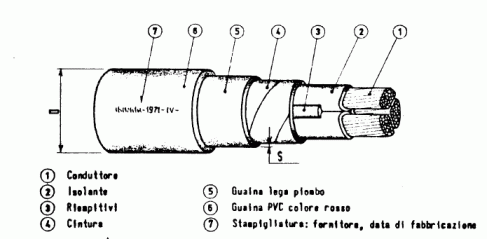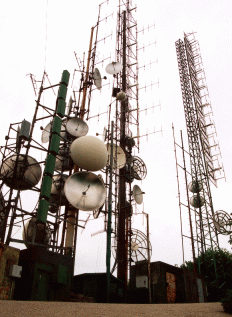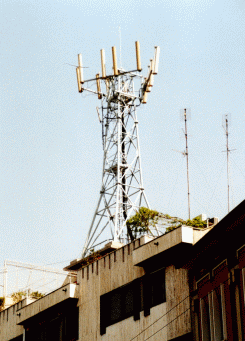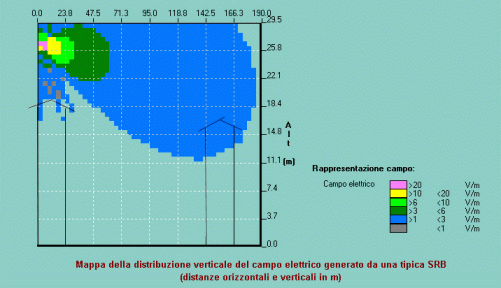What can be done to reduce current "background exposure"?
As far as traditional
electric lines are concerned, technical intervention to reduce both
electric and magnetic fields and the visual
impact![]() on the environment is possible. For instance, underground cables seem to have a possible future (fig.1). This technique has been used for a long time for medium voltages and recently also for high voltages, but only for limited tracts - owing to the fact that some technical problems have yet to be solved (e.g. the environmental impact when laying the line, or the reactive power induced as a capacitive current opposing the transmittable one, when the cable gets longer), and also for financial reasons - the initial cost is about ten times higher than the cost of a similar aerial line and maintenance costs are even greater.
on the environment is possible. For instance, underground cables seem to have a possible future (fig.1). This technique has been used for a long time for medium voltages and recently also for high voltages, but only for limited tracts - owing to the fact that some technical problems have yet to be solved (e.g. the environmental impact when laying the line, or the reactive power induced as a capacitive current opposing the transmittable one, when the cable gets longer), and also for financial reasons - the initial cost is about ten times higher than the cost of a similar aerial line and maintenance costs are even greater.
Compared to the aerial high voltage line, the underground line (with the cables placed at a depth of approximately 1 meter) allows for a remarkable reduction in the magnetic field, especially when the cables are set in helicoidal configurations. The cables allow also for a reduction in the electric field thanks to the conductors' closeness and to the screening effect of the ground.
Another particularly interesting solution to reducing magnetic field exposure from aerial lines involves compact versions whereby, using insulating brackets, the conductors can be set much closer than in traditional lines. Moreover, as they are smaller in size, compact lines also reduce the visual impact.
In order to reduce electromagnetic fields due to radio-base antennae (fig. 2 and 3) several measures could be incorporated right from the planning stage, such as adopting better technical solutions and, above all, finding suitable sites. For already installed systems, the best advices are: a) reduce the power emitted by the source, b) ensure the electromagnetic stream does not directly hit nearby houses, c) increase the distance between the source and exposed people, d) erect a shield between the source and affected houses.
|
|
|
|
| Fig. 2: TV repeaters.
(Credit: Arpa Veneto) |
Fig. 3: Radio Station. (Credit: Arpa Veneto) |
|
|
| Fig. 4: Map of vertical distribution of electric field generated by a typical radio station (horizontal and vertical distances in meters). (Credit: Arpa Veneto) |
N.B. A reduction in source power would be the best choice and the most effective and obvious one, but in the case of telecommunications it is necessary to consider that a lowered power could create serious difficulties for the service.
Other solutions are being studied (such as the so-called "intelligent antenna"), but very often they present technical and practical difficulties besides financial ones. The difficulties will be offset by a better management of a resource so precious both for users and suppliers.



